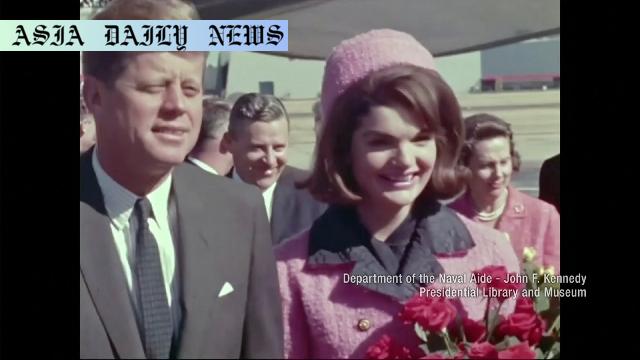JFK Assassination Files: Trump orders full disclosure of classified documents, setting timelines for the JFK, RFK, and MLK cases.
- Trump signs an executive order for full release of JFK files.
- Sets 15-day timeline for JFK documents and 45-day timeline for RFK and MLK files.
- Encourages transparency amid years of conspiracy theories and withheld data.

Trump Orders Full Disclosure of JFK Files
In a landmark decision, US President Donald Trump has signed an executive order directing the full and complete release of classified government files concerning the assassination of former President John F. Kennedy. This bold move aims to resolve years of speculation and conspiracy theories surrounding JFK’s tragic demise in Dallas, Texas, in November 1963.
Timelines Set for Transparency
This directive is not limited to JFK alone. The order also stipulates the release of information pertinent to the assassinations of Robert F. Kennedy, the former US Attorney General, and Dr. Martin Luther King Jr., a renowned civil rights leader. Trump’s initiative incorporates a definitive timeline, with JFK files slated for disclosure within 15 days and plans for the RFK and MLK records within 45 days.
Lingering Mysteries and Conspiracy Theories
President Kennedy’s assassination has been the subject of intrigue and debate since the Warren Commission reported that Lee Harvey Oswald acted alone in the crime. Theories implicating Cuba, the Soviet Union, and even the CIA have fueled curiosity for decades. Although significant portions of the investigation have been made public, the promise of unveiling long-held secrets has reignited public interest.
A Push for Transparency Amid Public Demand
“A lot of people have been waiting for this one for years,” Trump remarked during the signing. For decades, the request for transparency in these historical events has been overshadowed by national security concerns and bureaucratic roadblocks. By directing the Director of National Intelligence and Attorney General to draft plans for disclosure, the White House is signaling a commitment to address such longstanding issues.
Security vs. the Public’s Right to Know
The release of these files, especially some still-unpublished JFK-related records, will likely include sensitive materials. Government officials have historically withheld documents for reasons tied to national security and intelligence operations. Yet this directive orders a thorough review by top legal and security experts to ensure transparency without compromising the integrity of ongoing investigations or operations.
The Public’s Reaction and Anticipation
The American public and historians alike have responded to this announcement with mixed reactions, ranging from excitement to skepticism. For conspiracy theorists, journalists, and academics, the release is an opportunity to debunk misinformation or validate suspicions about governmental involvement or oversight in these high-profile cases.
Implications of This Bold Decision
Trump’s directive represents a milestone in presidential efforts to promote historical clarity. By opening these files, the administration aligns itself with the principles of government transparency and public accountability. However, critics remain cautious as history has shown that expectations of full disclosure often meet new questions or suspect redactions.
A Step Toward Closure and Understanding
The decision to release these assassination files is not only an administrative challenge but a chance to offer closure to a nation burdened by unresolved questions. As the administrations involved proceed to disclose these secrets over the coming weeks, the world eagerly awaits the insights these files may reveal about pivotal moments in modern history.



Commentary
A Historic Step Toward Transparency
President Trump’s bold decision to release classified files related to the JFK assassination and other high-profile cases is a testament to the public’s enduring demand for answers. For decades, conspiracy theories have swirled around JFK’s death, lending an air of mistrust to our understanding of key moments in US history. This directive represents a significant step toward transparency and accountability, qualities that are essential for public trust in government institutions.
Balancing Openness and Security
The decision to release sensitive documents, however, is not without its challenges. Striking the right balance between openness and national security is no small task. Critics may rightfully ask whether certain parts of these files will remain redacted or whether their content may lead to more questions than answers. It is incumbent upon government officials to handle this release with care, ensuring that it contributes to public understanding rather than creating new avenues for misinformation.
Encouragement for Future Policy
This move also sets a valuable precedent. By committing to a timeline for disclosure, Trump’s administration offers a model for how future administrations might address classified information and transparency. The expectation is that this approach could inspire similar efforts related to other sensitive historical and political events, fostering a culture of openness in governance.
Looking Ahead
As the files are released, their content will undoubtedly be dissected by historians, journalists, and the public at large. This is an opportunity to bridge the gap between speculation and fact, providing a clearer narrative for future generations. While challenges remain, this directive is an important step in addressing one of the most enduring mysteries of modern American history.